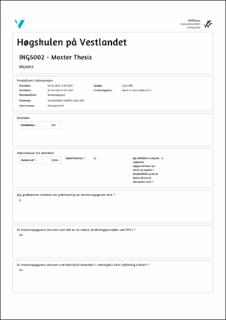| dc.description.abstract | In an era where sustainable materials like timber are becoming more prevalent in building design and construction, it's crucial to understand and accurately model the behavior of structure fires involving these materials One of the challenges that fire engineers face is being able to predict how the progression of a room fire with exposed wood surfaces develops. This thesis therefore focuses on using computational fluid dynamics (CFD), specifically the Fire Dynamics Simulator (FDS) software, to model enclosure fires involving exposed Cross-Laminated Timber (CLT) surfaces.
The existing body of research exploring the use of CFD software for modelling fires involving exposed timber surfaces is limited. Additionally, the accuracy of results from these studies varies widely. However, interest in this area of research is growing due to its potential in facilitating safe, economically viable, and aesthetically pleasing building solutions. An investigation of the subject is here presented, aiming to contribute to this emerging field and provide insight into existing knowledge, modelling methodology, and result analysis.
FDS was used to model a previously conducted compartment fire experiment involving CLT, based on the work by Bartlett et al. [1]. The simulation incorporated a pyrolysis model provided by Rinta-Paavola & Hostikka [2] to model the release of combustible gases from the exposed timber. Accuracy validation of the FDS model became feasible by comparing the model results with the experimental data. This comparison also facilitated the identification of the model's limitations and provided a basis for subsequent discussions on potential enhancements in the model.
The results from the simulation were inconclusive. The heat release rate (HRR) aligned with the experimental data at an acceptable level, but the temperature readings inside the CLT elements and compartment gas-phase temperature provided insufficient output. The mass loss rate (MLR) from the CLT showed a degree of coherence with experimental data, but the estimations methods to calculate MLR in the experiment by Bartlett et al. gave further insecurities about the accuracy. The most significant limitation of the model was its underperformance in predicting gas-phase temperatures, which in turn impacted other outputs. Suggestions for model improvement include adjusting grid resolution and refining the material properties and the pyrolysis model used for CLT. Additionally, strategies to decrease computational time are strongly recommended, as this can significantly expedite progress in research involving such simulation models. | en_US |

